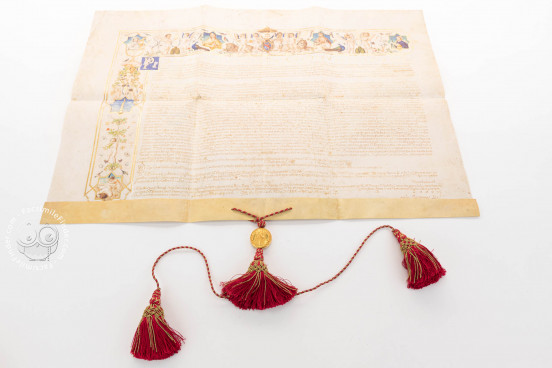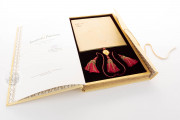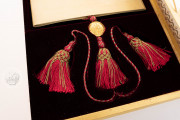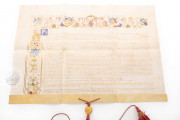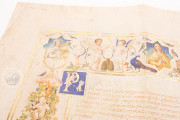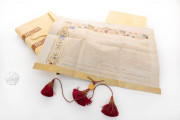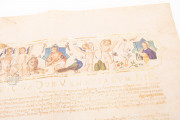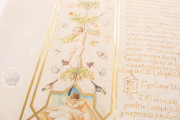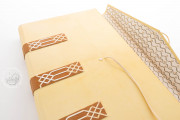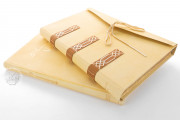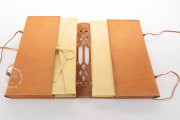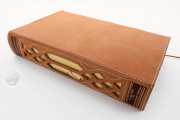The document known as "Munificentia Venetiarum," dating to 1586, holds a special value among the archives preserved relative to the Veneto area and was safely stored in the Vatican Archives for centuries. Presented to Pope Sixtus V by the Venetian Doge Pasquale Cicogna (1585-1595), a distinguished figure both in business and military affairs who held the titles of Duke of Candia and Rector of Cyprus, the document represents a solemn deed wherein the Doge generously donated to the Pope Palazzo Gritti near the church of S. Francesco della Vigna in Venice. This magnificent residence, previously occupied by Doge Andrea Gritti (1533-1538), had been purchased from Gritti's heirs by the Republic of Venice.
The document is not only historically significant but also artistically remarkable. Indeed, the parchment is adorned with fine illuminations, framed in gold, on two borders, and bears the splendid gold seal of Doge Pasquale Cicogna. This seal is attached to the document by a red silk thread interwoven with gold threads, adding to its grandeur.
A Pivotal Document of Diplomatic Relations
Doge Pasquale Cicogna took great care in preparing the deed of donation: this attention to detail emphasizes the importance that the Doge and the government of the Serenissima attributed to this document and to the gift it certified and witnessed. The document's exquisite beauty may have been intended to impress Pope Sixtus V, who had recently ascended to the papal throne.
The act of donating palazzo Gritti underscored the desire of Doge Pasquale Cicogna and the Republic to maintain secure relations with the Holy See. Despite past disputes, the gesture represented a tangible sign of goodwill and a commitment to desired future harmony. Beyond its opulent appearance, the "Munificentia Venetiarum" holds a diplomatic rationale that justified the expenditure for the purchase and subsequent donation of the building to the Pope.
Though a specific episode in history, the document assumes a prominent role in what can be described as "administrative-diplomatic" deeds, displaying a blend of theological and political aspects. The inclusion of a precious gold seal, a rarity for the Doges of Venice who often used lead seals, further emphasizes the document's political and diplomatic significance in the historical context of its time.
What's in the Document?
The document is structured in various sections, and includes: presentation of the circumstances and reasons prompting the Republic of Venice to make the donation; deed of donation with attachment of the deed of purchase of the palazzo by the Republic of Venice from Doge Andrea Gritti's heirs dated 19th March 1586, drawn up by the notary Cesare Ziliol; short abstract, in vernacular, of the contents of the deed of purchase of the palazzo; publication of the deed of donation of the palazzo to Pope Sixtus V by Doge Pasquale Cicogna on August 30, 1586, in the presence of Nicolò de Guaschis, witness, Bonifacio Parula, notary, Carlo Berengo, ducal secretary, and corroborated by the attachment of the Doge's golden bull.
We have 1 facsimile edition of the manuscript "Munificentia Venetiarum": Munificentia Venetiarum facsimile edition, published by Scrinium, 2004
Request Info / Price
